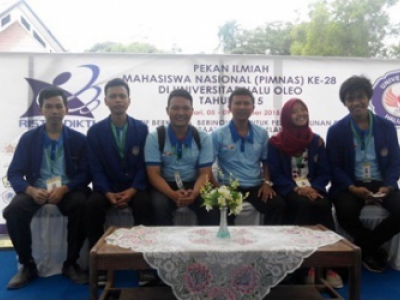PAPINKA Is Awarded Gold Medal at Pimnas Xxviii

PAPINKA (Palang Pintu Kereta Api Otomatis Berbasis Sensor Ultrasonic/Ultrasonic Sensor-based Automatic Train Doorstop) from Faculty of Engineering YSU grabbed a gold medal in the presentation category at National Student Scientific Week (PIMNAS) XXVIII held at Halu Oleo University, Kendari on 5 — 9 October 2015. In addition to gold medal, the team also gained a bronze medal in the poster category.
This team consists of Dimas Imaduddin from Civil Engineering and Planning Education, Kiky Aprilia Yannik, Rizky dan Sigit from Electrical Engineering, and Hanafi Slamet from Mechatronics Engineering Education, led by a supervising lecturer Mohammed Ali, M.T. from Electrical Engineering Education.
There are 5 areas of competition on PIMNAS i.e. PKM-P, PKM-M, PKM-K, PKM-KC dan PKM-T. PAPINKA belongs to the PKM-KC.
The creation of PAPINKA was encouraged by high rates of accidents that occurred near train doorstop. PAPINKA is an automatic train doorstop prototype equipped with a countdown to provide information and early warning to users that pass through the railway.
This device is controlled by a microcontroller that gets input from the Ultrasonic sensors mounted on the gate at a certain distance before the railway. Ultrasonic sensors would record the speed and length of trains. The input is then processed by the microcontroller to start counting down before the arrival of a train and then will move down the doorstop. The device will also count down on seven segments mounted on the doorstop.
"This tool displays the countdown of train arrival, then road users can estimate when the gate will close, so they can stop comfortably and safely," Dimas said as the Chairperson of the team.
This tool is aimed to reduce the frequency of accidents that occur at the train doorstop. In addition, this tool can help guard the train while running, and may reduce the accident risk due to negligence of rail conductors.
"In the future there will be further development of this tool, so we can eventually see significant decrease of train-related accidents" Dimas added. (Public Relations, Faculty of Engineering)

